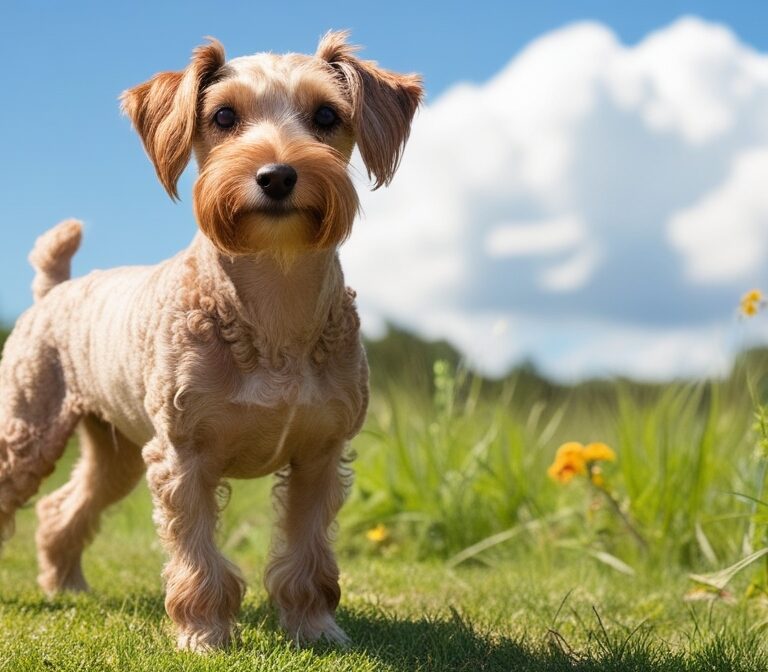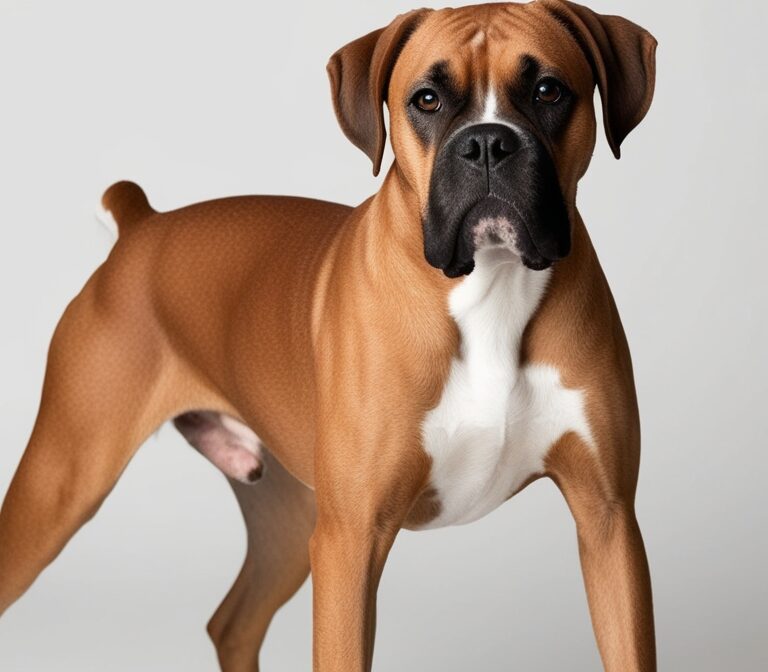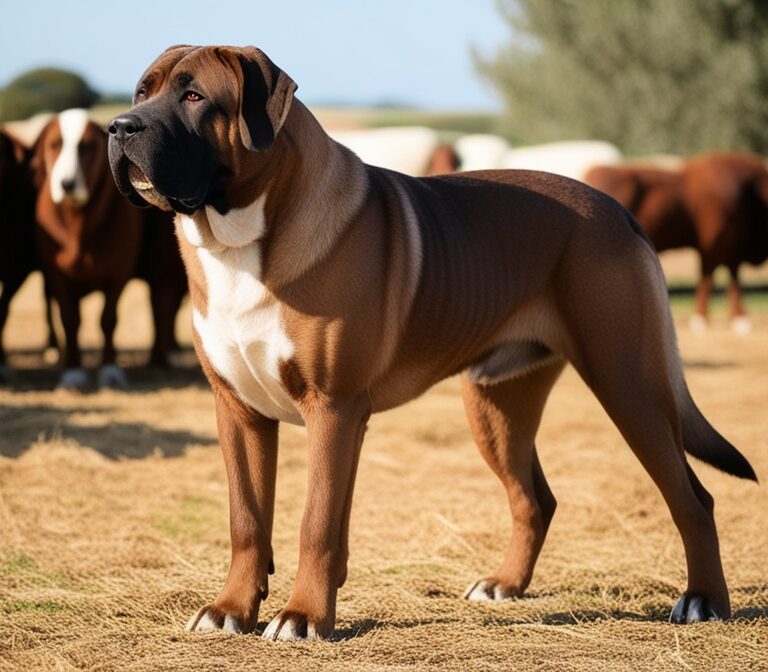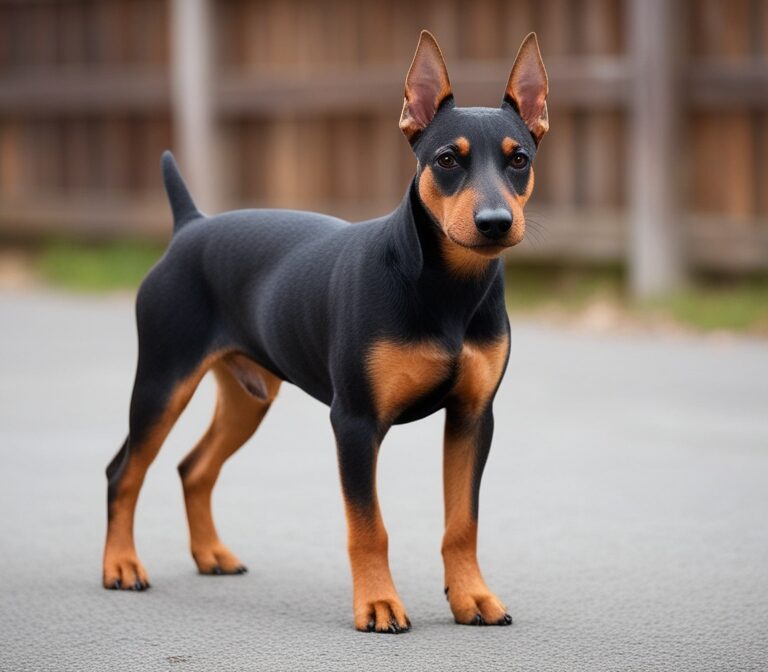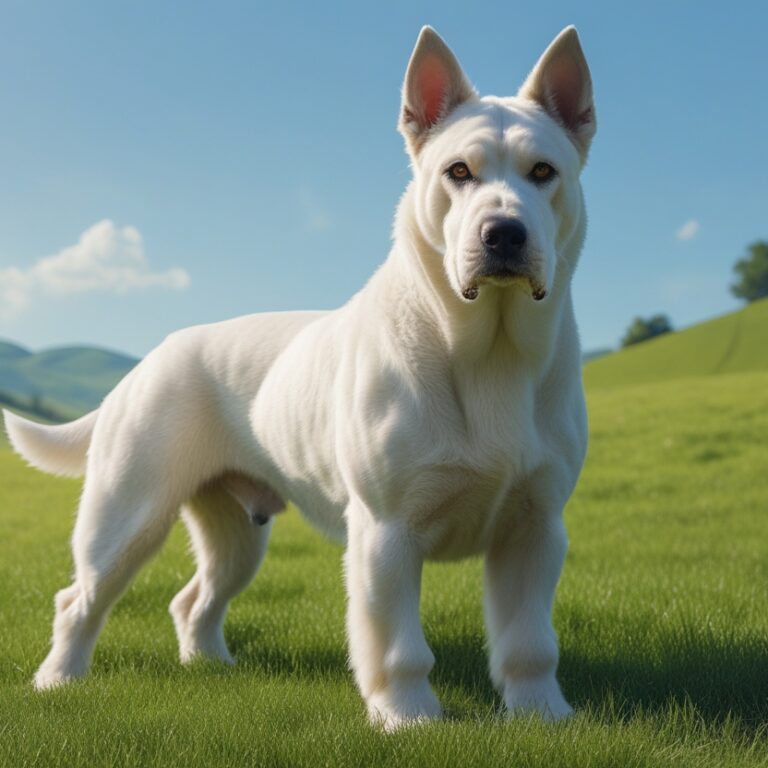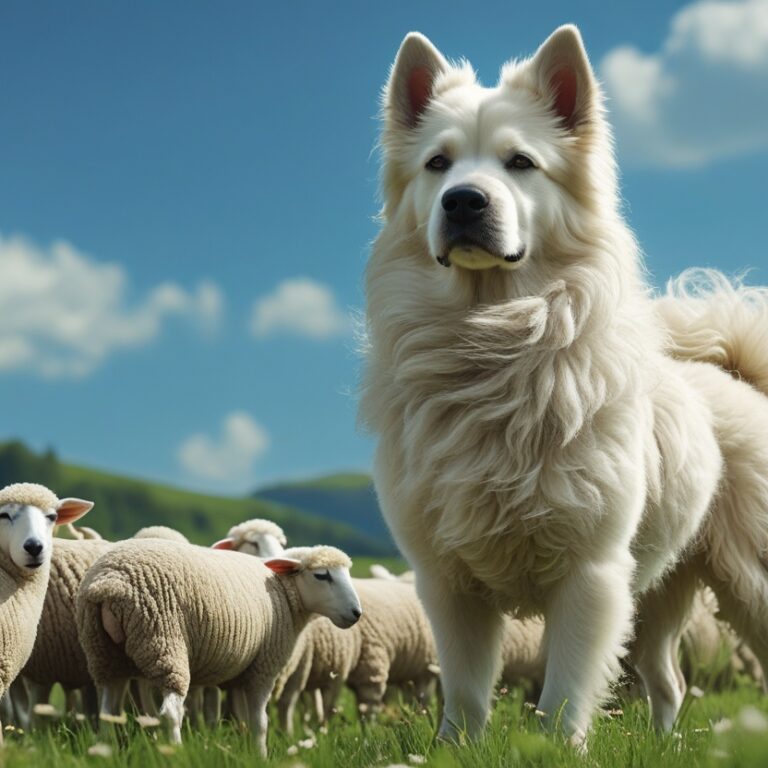Discovering the Bearded Collie: History, Personality, and Care

Introduction to the Bearded Collie
The Bearded Collie, often affectionately called the “Beardie,” is one of Scotland’s most iconic herding dogs. With its long, flowing coat and expressive bearded face, the breed has captured the hearts of farmers, dog enthusiasts, and families around the world. Known for its energetic and affectionate personality, the Bearded Collie thrives as both a working dog and a beloved household companion. Unlike many modern breeds that were developed primarily for appearance, the Bearded Collie has deep roots as a practical farm dog, trusted for centuries to move sheep and cattle across rugged terrain. Today, the breed’s versatility allows it to excel in a wide variety of roles, including obedience, agility, therapy work, and family life. This combination of working ability, beauty, and charm ensures that the Bearded Collie remains a unique and cherished breed.
Origins and History in Scotland
The origins of the Bearded Collie trace back several centuries in Scotland, where they were developed as hardy and versatile herding dogs. Farmers relied on them to handle sheep and cattle in the challenging landscapes of the Scottish Highlands and Lowlands. Their distinctive shaggy coats provided protection from cold, rain, and wind, while their intelligence and stamina made them indispensable partners in the fields. Early written accounts of shaggy herding dogs appear in the 16th century, and paintings from the period depict dogs remarkably similar to the modern Bearded Collie. These dogs were sometimes referred to as “Highland Collies” or “Mountain Collies” before the name “Bearded Collie” became standard. Though their numbers declined in the 20th century, enthusiasts such as Mrs. G. O. Willison in England helped revive the breed, establishing modern breeding programs that preserved its working ability and distinctive appearance. Today, the Bearded Collie enjoys recognition by major kennel clubs worldwide.
Development into a Recognized Breed
The formal recognition of the Bearded Collie came after decades of dedicated preservation efforts. While the breed had existed for centuries as a farm dog, it was not until the mid-20th century that it began appearing in official registries and dog shows. Mrs. G. O. Willison is credited with founding the modern breed, starting with her foundation stock in the 1940s. The Bearded Collie Club was later formed in Britain, standardizing breed characteristics and encouraging responsible breeding practices. By the 1970s, the Bearded Collie had gained recognition with the American Kennel Club (AKC) and other international organizations, officially joining the Herding Group. Breed standards established height, coat, and temperament requirements while still emphasizing the dog’s working origins. Today, the Bearded Collie is celebrated both as a show dog and a companion animal, though many still honor its roots by participating in herding trials that highlight its enduring skills.
Physical Appearance and Breed Standards
The appearance of the Bearded Collie is defined by its balance of strength, agility, and distinctive coat. Standing between 20 and 22 inches tall at the shoulder, the Beardie is a medium-sized dog with a lean but muscular frame. Males typically weigh between 45 and 55 pounds, with females slightly lighter. The hallmark of the breed is its long, flowing double coat, which gives it a shaggy yet elegant look. The outer coat is flat and harsh to the touch, while the undercoat is soft and dense, providing insulation against weather. Coat colors include black, blue, brown, and fawn, often with white markings. Puppies may be born with darker shades that lighten as they mature, sometimes changing significantly during the first year. The expressive eyes and bearded muzzle give the dog a characteristic wise and gentle expression, while its movement is light, free, and powerful, reflecting its heritage as a tireless herding dog.
Coat Characteristics and Grooming Demands
The coat of the Bearded Collie is both its most recognizable feature and its greatest grooming challenge. The long, shaggy double coat requires regular care to prevent tangles, mats, and excessive shedding. Owners are advised to brush their Beardies at least three to four times per week, with full grooming sessions taking up to an hour. This prevents painful mats from forming and keeps the coat looking healthy and flowing. During seasonal shedding, more frequent grooming may be necessary to manage the thick undercoat. Bathing is recommended every six to eight weeks, depending on lifestyle, with careful drying to avoid tangling. While the coat is stunning in appearance, it demands dedication from owners who must commit to consistent maintenance. Despite the effort, many find grooming sessions a bonding experience with their dogs, strengthening the relationship. For those unwilling to invest the time, the Bearded Collie may prove overwhelming, as neglecting grooming quickly leads to discomfort for the dog.
Temperament and Personality Traits
The temperament of the Bearded Collie is one of its greatest assets, combining friendliness, intelligence, and enthusiasm. Often described as bouncy and cheerful, Beardies are known for their lively spirit and playful personalities. They thrive on companionship and dislike being left alone for extended periods, preferring to be at the center of family activities. Their intelligence makes them quick learners, but they are also independent thinkers who sometimes test boundaries, requiring patient and consistent training. Beardies are typically friendly with strangers and rarely aggressive, though their alertness makes them reliable watchdogs. Their herding instincts may surface in playful attempts to chase or herd children and other pets, but this behavior is usually manageable with guidance. Owners who enjoy an energetic, affectionate, and people-oriented dog often find the Bearded Collie an ideal companion. Its combination of loyalty, charm, and enthusiasm makes it a breed that fills households with joy and activity.
Bearded Collie vs Border Collie
When comparing the Bearded Collie to the Border Collie, two herding breeds with Scottish roots, distinct differences emerge despite their shared purpose. The Border Collie is widely regarded as the most intelligent dog breed, excelling in precision herding and obedience sports. By contrast, the Bearded Collie is less intense but equally effective in its own style, known for its “bouncy” herding technique that startles sheep into movement. The Beardie is also larger and shaggier, with a more laid-back temperament compared to the highly driven Border Collie. Families often find the Bearded Collie better suited to home life due to its playful and social personality, while the Border Collie may require more mental stimulation and work to remain happy. Both breeds excel in agility, obedience, and dog sports, but their differences in energy levels and temperament make them suitable for different kinds of owners and environments.
Intelligence and Trainability
The Bearded Collie is highly intelligent, capable of learning complex commands and excelling in advanced training exercises. This intelligence, however, comes with an independent streak that sometimes makes training a challenge for inexperienced owners. Consistency, patience, and positive reinforcement are key to success. Beardies respond best to engaging training methods that keep sessions fun and rewarding, as they may become bored with repetitive tasks. Early obedience training and socialization are essential to channel their intelligence into positive behaviors. Because of their problem-solving abilities, Beardies excel in activities such as agility, obedience trials, and rally competitions. They are also quick to pick up tricks and thrive on mental stimulation. Without sufficient training and engagement, their intelligence may lead to mischief, such as opening doors, finding hidden treats, or devising their own games. With the right approach, the Bearded Collie’s intelligence makes it a versatile and rewarding partner.
Exercise Needs and Energy Levels
The energy levels of the Bearded Collie are high, reflecting its working origins as a herding dog. This breed requires at least one to two hours of daily exercise to stay healthy and content. Long walks, play sessions, and off-leash activities in secure areas are highly beneficial. Beardies particularly enjoy activities that challenge both mind and body, such as agility courses, fetch games, and advanced obedience exercises. Without sufficient exercise, they may become restless, vocal, or destructive, as their energy must find an outlet. Families with active lifestyles, farms, or large backyards are best suited to this breed, as it thrives in environments where movement and interaction are constant. Owners who enjoy outdoor activities such as hiking, running, or cycling will find the Bearded Collie an eager companion. When its exercise needs are met, the breed is calm and affectionate indoors, making it a manageable and delightful family dog.
Herding Instincts and Working Abilities
The herding instincts of the Bearded Collie remain strong, even in dogs that have never worked on a farm. Historically, the breed used its agility, intelligence, and endurance to move livestock across rough Scottish terrain. Unlike the intense “eye” used by Border Collies, the Bearded Collie employs a distinctive “bouncy” style, darting in and out of the flock while leaping to gain visibility over the herd. This unique herding method made them invaluable for farmers handling both sheep and cattle. Even today, many Beardies excel in herding trials, demonstrating skills passed down through generations. These instincts can also appear in domestic settings, with some Beardies attempting to herd children, other dogs, or even cats. While charming, this behavior underscores the breed’s strong working heritage. For owners who enjoy dog sports, providing opportunities to participate in herding trials or similar activities allows the Bearded Collie to express its natural talents in a positive way.
Bearded Collie in Dog Sports and Competitions
The Bearded Collie excels in dog sports, where its intelligence, agility, and enthusiasm combine to create a competitive edge. Agility is one of the most popular sports for Beardies, as their speed and athleticism make them natural competitors. Their eagerness to please and quick learning abilities also shine in obedience and rally competitions, though their playful personalities sometimes add unpredictability. Flyball, herding trials, and even canine freestyle are other areas where the breed performs well. Participation in sports not only provides physical exercise but also offers crucial mental stimulation, keeping the dog engaged and fulfilled. Many owners find that sports strengthen the bond between dog and handler, creating a rewarding partnership. Beyond competition, Bearded Collies often serve as therapy dogs, visiting hospitals and care homes where their cheerful personalities bring joy and comfort. This versatility showcases the breed’s adaptability and reinforces its role as both a working dog and a cherished companion.
Grooming and Coat Maintenance in Detail
Caring for the coat of the Bearded Collie is a responsibility that requires consistency and patience. The long, double-layered coat is prone to tangling and matting, particularly behind the ears, around the legs, and under the belly. Regular brushing with a pin brush and slicker brush is essential to maintain a smooth and healthy coat. Many owners dedicate several hours per week to grooming, ensuring that loose hairs are removed and mats are prevented before they form. Bathing should be done every six to eight weeks, using high-quality dog shampoos to maintain coat texture. After bathing, thorough drying with a high-velocity dryer is necessary to prevent dampness, which can lead to skin irritation. Some owners choose to keep their Beardies in a shorter “puppy cut” for easier maintenance, though this diverges from the traditional show standard. Regardless of coat length, grooming is an integral part of Bearded Collie ownership, requiring both time and dedication.
Diet and Nutrition for Bearded Collies
The diet of the Bearded Collie plays a crucial role in supporting its active lifestyle and maintaining a healthy coat. High-quality dog food rich in protein, healthy fats, and balanced carbohydrates is recommended to meet the breed’s energy requirements. Active Beardies may require 1,200 to 1,500 calories per day, depending on age, weight, and activity level. Protein sources such as chicken, lamb, or fish help maintain muscle tone, while omega-3 fatty acids from fish oil or flaxseed contribute to coat health. Owners should avoid foods with fillers and artificial additives, as these can cause digestive issues or allergies. Fresh water must always be available, especially during exercise or warm weather. Feeding schedules typically involve two meals per day to prevent bloating and maintain consistent energy levels. Regular monitoring of weight is important, as Beardies are naturally active but can gain excess weight if under-exercised. A proper diet ensures longevity and overall vitality.
Common Health Concerns in the Breed
The Bearded Collie is generally healthy, but like all purebred dogs, it is predisposed to certain health conditions. Hip dysplasia, a genetic disorder affecting the hip joints, is one of the most common issues. Responsible breeders screen for this condition to minimize risks. Autoimmune diseases such as hypothyroidism and Addison’s disease are also observed in the breed, requiring lifelong management through medication and veterinary monitoring. Progressive retinal atrophy, an eye disorder leading to vision loss, may occur in some dogs, though testing has reduced its prevalence. Regular veterinary check-ups, including dental care and vaccinations, are essential for maintaining health. Genetic testing and responsible breeding practices have significantly improved overall health outcomes, but prospective owners should work with reputable breeders who prioritize health screenings. With proper care, Bearded Collies can enjoy long, active lives free from major health complications, though owners should remain vigilant for early signs of illness.
Lifespan and Senior Care Considerations
The average lifespan of the Bearded Collie is 12 to 14 years, though some individuals live even longer with excellent care. As Beardies age, their energy levels naturally decrease, and joint issues such as arthritis may become more common. Senior care should include adjustments to diet, focusing on foods that support joint health and maintain a healthy weight. Supplements such as glucosamine and chondroitin are often beneficial. Regular, gentle exercise helps preserve mobility while preventing obesity, which can exacerbate joint problems. Routine veterinary check-ups become even more critical in senior years, as early detection of age-related conditions improves treatment outcomes. Owners should also adapt grooming routines to accommodate any stiffness or discomfort the dog may experience. Providing a comfortable living environment with supportive bedding and easy access to food and water helps senior Bearded Collies enjoy a high quality of life in their golden years.
Bearded Collies with Families and Children
The Bearded Collie is an excellent family dog, known for its affectionate and playful nature. This breed thrives in households where it can be included in daily activities and enjoys spending time with children. Beardies are patient, gentle, and tolerant, making them well-suited to family life. Their playful energy matches well with active children, though supervision is recommended to prevent accidental herding behaviors, such as nipping at heels or circling. With proper training and socialization, Bearded Collies integrate smoothly into households with multiple pets, displaying friendliness toward other dogs and even cats. Their protective instincts are mild, but they remain watchful, often alerting owners to unusual activity without being aggressive. Families that enjoy outdoor activities, such as hiking or sports, find the Bearded Collie a perfect companion. Its combination of loyalty, energy, and affection ensures that it quickly becomes an integral and beloved member of the family.
Compatibility with Other Pets
The compatibility of Bearded Collies with other pets is generally positive, as their friendly temperament and social nature make them adaptable companions. They usually get along well with other dogs, especially when raised together from a young age. Their herding instincts, however, may occasionally surface, leading them to chase or “herd” smaller animals. With consistent training, this behavior can be redirected into appropriate activities. Cats often coexist peacefully with Beardies, though introductions should be supervised until both animals are comfortable. Small pets such as rabbits or rodents may be more vulnerable to herding behavior and should be carefully managed in multi-pet households. Overall, the Bearded Collie’s adaptable personality and desire for companionship make it a suitable choice for homes with multiple animals. Early socialization and positive reinforcement help ensure harmonious relationships with all members of the household, regardless of species.
Ideal Living Conditions and Home Environments
The ideal living conditions for Bearded Collies reflect their energetic and sociable nature. They thrive in homes where they have space to move freely, such as rural farms or suburban houses with large yards. Apartments are not ideal unless the owner is highly committed to providing daily exercise and stimulation. Bearded Collies are happiest when included in family life, rather than being confined to kennels or left alone for long periods. Their coats provide protection in cold climates, but they may struggle in extreme heat, requiring shade and fresh water in warmer environments. A securely fenced yard is beneficial, as Beardies enjoy running and playing off-leash but may wander if not contained. Ultimately, the breed adapts well to a variety of settings if its physical and emotional needs are met. Active, engaged households provide the best environment for these intelligent and affectionate dogs to thrive.
Training and Socialization for Bearded Collies
The training and socialization of Bearded Collies are critical for shaping well-mannered, confident dogs. Early puppy training classes introduce them to basic commands while also offering opportunities for social interaction with other dogs and people. Beardies respond best to positive reinforcement techniques, such as praise, play, and treats, as harsh methods can lead to stubbornness or withdrawal. Socialization should expose the puppy to different environments, sounds, and experiences to reduce shyness and build adaptability. Consistency in training is essential, as the breed’s intelligence and independence may otherwise lead to mischievous behaviors. Advanced training in obedience, agility, or herding further channels their intelligence and energy into productive outlets. Owners who commit to regular training and socialization find that their Bearded Collie matures into a balanced, well-adjusted companion capable of thriving in diverse environments and social situations.
Cost of Ownership and Breeding Ethics
The cost of owning a Bearded Collie includes both the initial price of the puppy and ongoing expenses. Reputable breeders typically charge between $1,200 and $2,500 for a Bearded Collie, depending on lineage, health testing, and pedigree. Annual expenses for food, grooming supplies, veterinary care, and training can easily exceed $1,500. Professional grooming, if chosen, adds to the cost, though many owners prefer to groom their dogs at home. Ethical breeding practices are essential to maintaining the health and well-being of the breed. Responsible breeders conduct genetic health testing, provide proper socialization, and prioritize long-term health over appearance or profit. Prospective owners should avoid purchasing from puppy mills or unverified breeders, as these sources often neglect health testing and proper care. Adoption from rescue organizations or shelters is another ethical option, providing a home for Beardies in need while reducing costs.
Rescue and Adoption Opportunities
Rescue organizations for Bearded Collies play an important role in rehoming dogs that are surrendered due to changes in family circumstances or unsuitable living conditions. Breed-specific rescues work across the United States, the United Kingdom, and other regions to connect Beardies with new families. Adoption fees are typically lower than purchasing from a breeder, averaging between $200 and $600, though they often include vaccinations, spaying or neutering, and health checks. Adopting a rescue Bearded Collie can be a deeply rewarding experience, as many of these dogs quickly bond with their new families and thrive in loving environments. While puppies are less common in rescues, adult Beardies often prove easier to manage due to established training and temperaments. For those seeking to make a positive difference, adoption provides both a loyal companion and the opportunity to support animal welfare efforts.
Myths and Misconceptions About the Bearded Collie
Several myths surround the Bearded Collie, often leading to misunderstandings about the breed. One common misconception is that Beardies are low-maintenance dogs due to their cheerful personalities. In reality, their grooming and exercise needs are substantial, requiring dedicated time and effort. Another myth suggests that the Bearded Collie is identical to the Old English Sheepdog, but the two breeds are distinct in both history and appearance. Some people also assume that Beardies are hyperactive and unmanageable, but with proper training and exercise, they adapt well to family life. Others believe that the breed is rare and difficult to find, yet reputable breeders and rescues ensure availability for those committed to responsible ownership. Dispelling these myths helps prospective owners develop realistic expectations and appreciate the unique qualities that make the Bearded Collie a delightful and rewarding companion.
The Breed’s Popularity in Modern Times
The popularity of the Bearded Collie has grown steadily over the past several decades, particularly among families seeking a playful and affectionate companion. While not as widely known as breeds like the Labrador Retriever or German Shepherd, the Beardie maintains a loyal following of enthusiasts. Its distinctive appearance, friendly personality, and versatility in sports and therapy work contribute to its appeal. In dog shows, Bearded Collies often draw attention for their elegant movement and striking coats. Their adaptability to both urban and rural environments also broadens their popularity, provided their exercise and grooming needs are met. Breed clubs and organizations actively promote the Bearded Collie through events, educational programs, and competitions, ensuring that the breed continues to receive recognition. Though not one of the most common breeds, the Beardie’s charm ensures it remains a treasured choice for those seeking a lively and affectionate companion.
Bearded Collies as Therapy and Service Dogs
The gentle temperament of the Bearded Collie makes it a natural candidate for therapy and service work. Their affectionate and friendly nature allows them to connect easily with people, bringing comfort to patients in hospitals, residents in care homes, and children in educational settings. With proper training, Beardies excel as therapy dogs, offering emotional support and companionship. Their intelligence and eagerness to learn also enable them to serve in some service roles, assisting individuals with disabilities by performing tasks such as retrieving items or providing stability. While they are not as commonly used as breeds like Labradors or Golden Retrievers for service work, Bearded Collies still demonstrate the versatility and adaptability that define the breed. Participation in therapy programs not only benefits those receiving care but also enriches the life of the dog, providing meaningful interactions and strengthening the bond between dog and handler.
Future of the Breed and Preservation Efforts
The future of the Bearded Collie depends on dedicated preservation efforts by breeders, clubs, and enthusiasts. As with many heritage breeds, there is concern about maintaining genetic diversity and preventing health issues linked to limited gene pools. Responsible breeding practices, supported by genetic testing and international cooperation, are essential for the long-term well-being of the breed. Breed clubs such as the Bearded Collie Club of America and the Bearded Collie Club of Scotland actively promote education, health testing, and community involvement. These organizations also encourage participation in sports and activities that showcase the breed’s versatility, ensuring that its working heritage remains alive. Public education about the responsibilities of Bearded Collie ownership further supports preservation by matching the breed with suitable homes. With continued dedication, the Bearded Collie will remain a vibrant and cherished breed for generations to come.
Conclusion
The Bearded Collie is a breed that combines centuries of working heritage with a joyful and affectionate spirit. Its shaggy coat, lively personality, and intelligence make it both a striking companion and a versatile working dog. While grooming and exercise demands are significant, the rewards of owning a Beardie are equally substantial, offering loyalty, playfulness, and companionship. From Scottish farmlands to modern households, the Bearded Collie has adapted without losing the traits that made it indispensable to farmers. Today, it thrives in roles ranging from herding and agility competitions to therapy and family life. For those willing to invest time and care, the Bearded Collie provides a lifetime of joy and connection, embodying both tradition and adaptability in a way few breeds can match.
